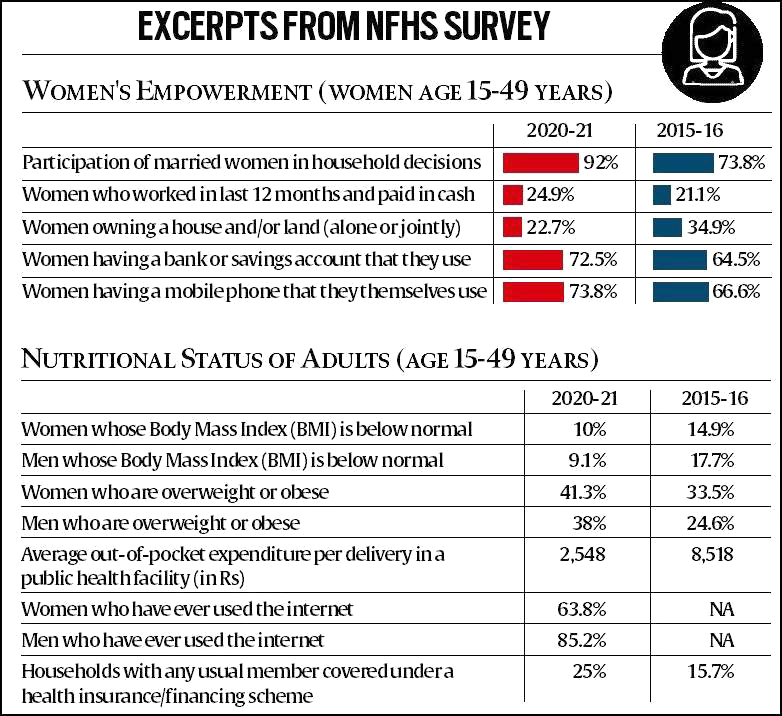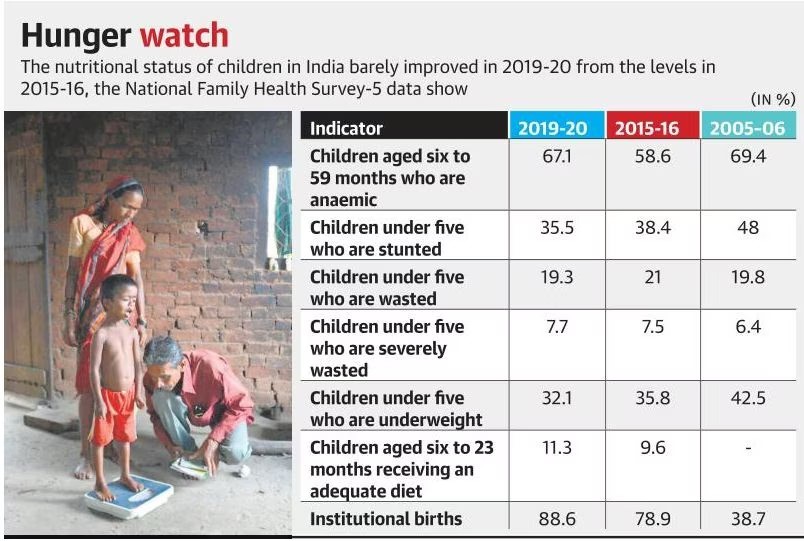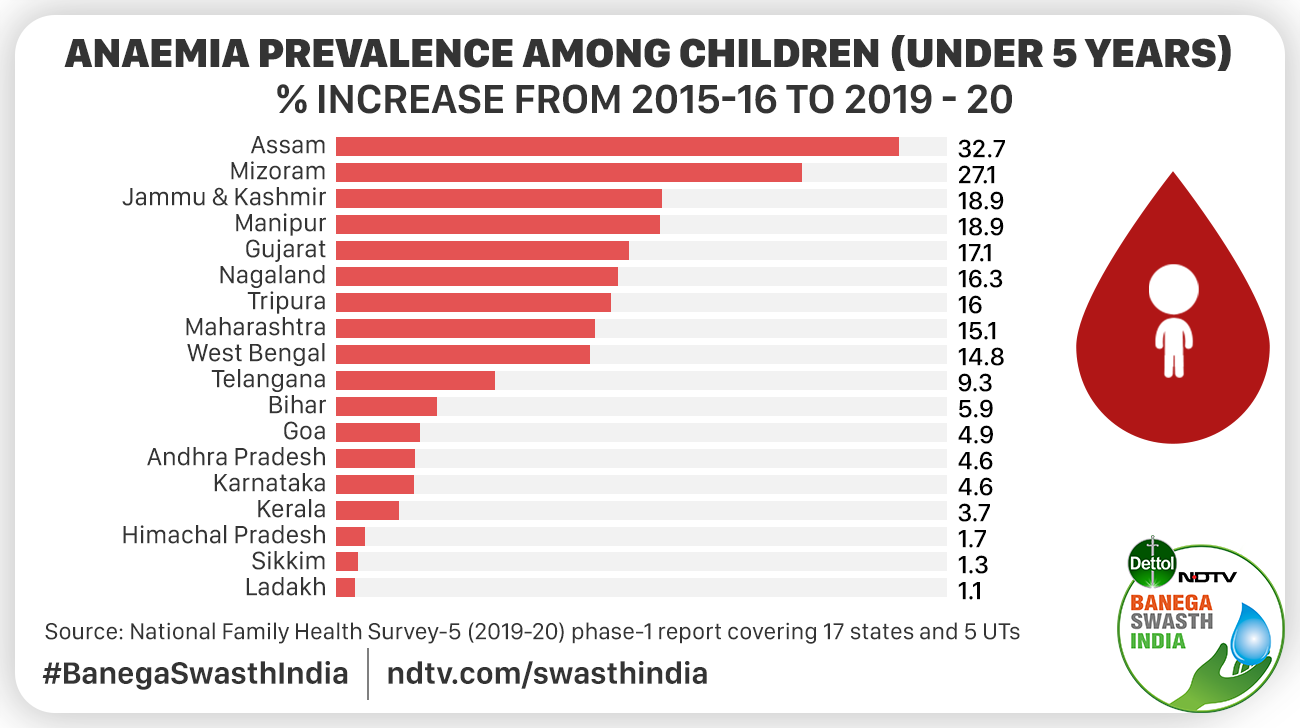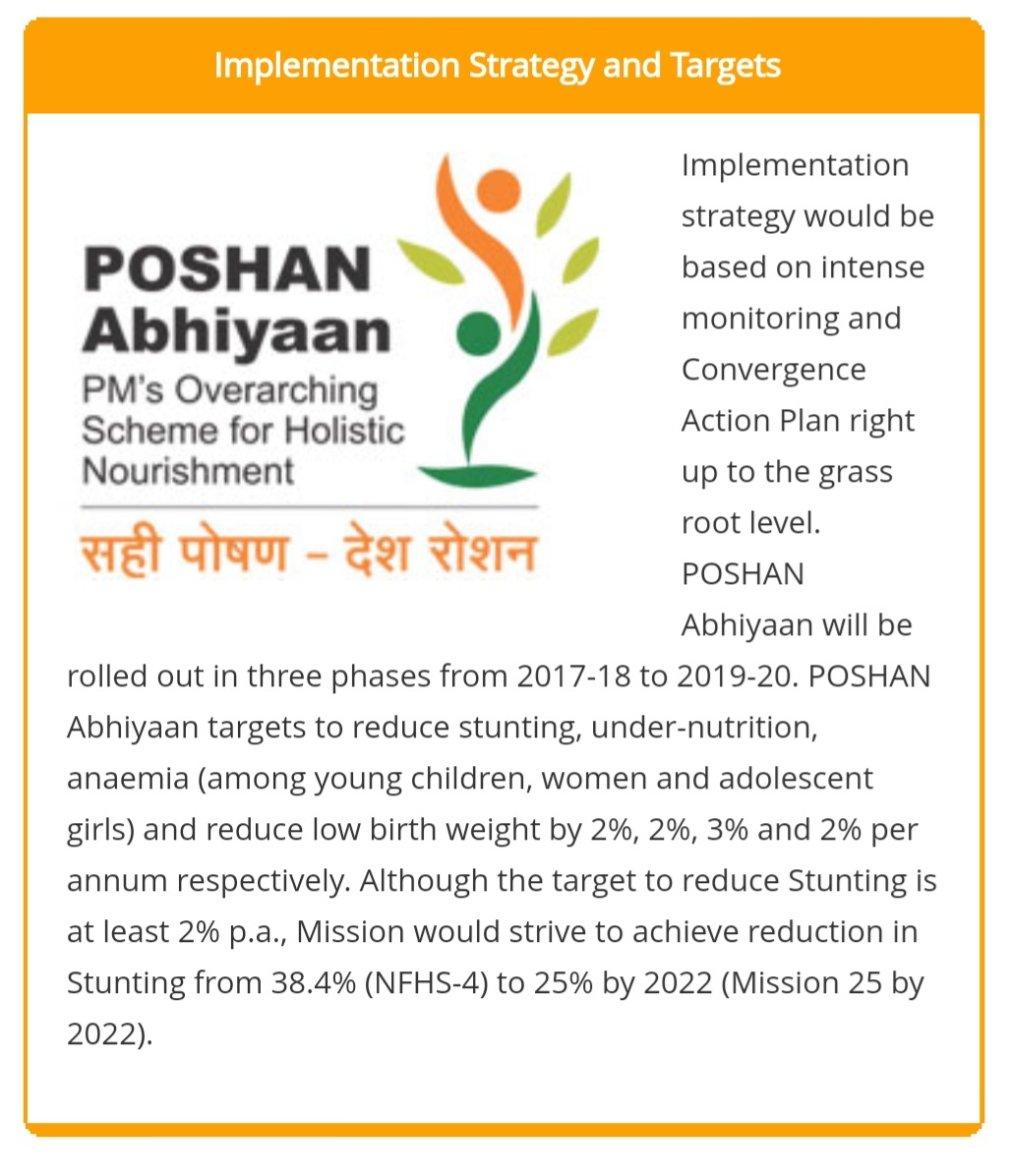Malnutrition is a condition that can result from insufficient, excessive, or otherwise unbalanced calorie and/or nutritional intake. There are three main categories of illnesses that fall under the umbrella term “malnutrition:”
Illnesses associated with a lack of food, such as wasting (a low body mass index), stunting (a low height for age), and underweight (a low body mass index);
malnutrition due to a lack of, or an excess of, vitamins and minerals that the body needs to function normally;
Noncommunicable diseases due to excess weight, poor diet, or both (such as heart disease, stroke, diabetes and some cancers)
Overview of India’s Malnutrition Crisis
As of the most recent survey in the National Family Health Survey (NFHS) series (2019–2021), the health and nutritional status of the Indian population has not improved significantly.
7.7% of children are extremely wasted, 19.3% are wasted, and 35.5% are stunted, according to recent statistics. Moreover, 3.4% of kids are overweight, up from 2.1% in the NFHS-4.
According to NFHS-4, the frequency of anaemia in children younger than five years old has increased to 67.1% from 58.6%. Overall, anaemia affects 57% of women of childbearing age in the country.
Source: Idronline
Why Indians are undernourished
Food insecurity: Food security is in jeopardy as a result of climate change, war, and conflict, and the decline in agricultural yield caused by unsustainable agriculture methods.
Lack of sanitation: dangers of not having access to clean water and proper sanitation
Lack of dietary diversity: Food inflation, shifting dietary habits, and monocropping all contribute to a population that is deficient in essential nutrients.
Inefficiencies in PDS: like data loss, miscounting, and poor migrant coverage.
 Source: NFHS-5
Source: NFHS-5
National Family Health Survey-5 findings
Meghalaya has the highest rate of stunting among children (46.5%), followed closely by Bihar (42.9%).
The rate of wasted children in Maharashtra is the highest in the country at 25.6%, followed closely by Gujarat at 25.1%.
The state of Jharkhand has the highest rate (26%) of underweight females (15–49 years old) (BMI).
Other Results:
From NFHS-4 to NFHS-5, the national average of children born to each woman, or Total Fertility Rate (TFR), fell from 2.2 to 2.0.
The country’s overall contraceptive prevalence rate (CPR) has jumped from 54% to 67%.
There has been a significant rise from 79% to 89% in the percentage of births that occur in hospitals across India.
Overall, the rate of stunting has decreased from 38.4% to 35.5%, wasting has decreased from 21.0% to 19.3%, and underweight has decreased from 35.8% to 32.1%.
The percentage of underweight women (15–49 years old) has decreased from 22.9% in NFHS-4 to 18.7% in NFHS-5.
Definition of Malnutrition and Related Efforts
Malnutrition occurs when the body does not get enough of the vitamins, minerals, and other nutrients it needs to keep its tissues and organs functioning normally.
People might suffer from malnutrition in two different ways: either they are undernourished or they are overnourished.
 Source: NFHS-5
Source: NFHS-5
Policies enacted by the government to tackle Malnutrition
Government has to Ensure a Sufficient Supply of Food With the goal of providing for food and nutritional security in a human life cycle approach, we work to guarantee that all individuals can afford a healthy diet. Women and children’s nutritional support is a priority for the Act.
The Midday Meal Program is the largest school food programme in the world, serving almost 12 crore children per day. Increased enrollment, retention, and attendance, as well as better child nutrition, are all goals of the programme.
The Public Supply Chain: The Public Distribution System (PDS) in India is the largest of its kind in the world and serves a crucial role in ensuring the availability of safe and nutritious food.
The “Antyodaya Anna Yojana” (AAY) programme plans to identify one crore of the poorest of the poor households from among the BPL families covered by TPDS in the States and distribute food grains to them at a substantially subsidised rate.
The purpose of the POSHAN Abhiyaan is to decrease malnutrition by using a life-cycle approach that is synergized and results-oriented.
The mission, led by the Ministry of Women and Child Development (MWCD), aims to reduce the current rate of stunting among children aged 0-6 from 38.4% to 25% by the year 2022. Low birth weight is another target, along with anaemia in women and teenage females aged 15–49.
 Source: NDTV
Source: NDTV
Curbing Malnutrition
 Source: Poshaan abhiyaan.gov.in
Source: Poshaan abhiyaan.gov.in
Increasing monetary commitments to better the health and nutrition of women and children is essential to ensuring their long-term success and a higher quality of life.
India has to take a results-based approach to its nutrition initiatives. Last-mile delivery of critical nutrition services and treatments requires direct interaction with nutritionally vulnerable groups such as the elderly, pregnant women, people with special needs, and young children.
A number of studies have found a positive correlation between maternal education and the likelihood that their children will use nutrition interventions intended to improve their health. We need to give the young generation a leg up in the workforce by improving their diet and health.
Monitoring and Evaluating Programmes: There needs to be a method for keeping track of how well programmes are doing and for using that information to fix problems both high up in the system and down on the ground. We need to evaluate the nutritional status of all of the states, keep tabs on how well the programmes are being implemented, and make well-thought-out policy decisions.












